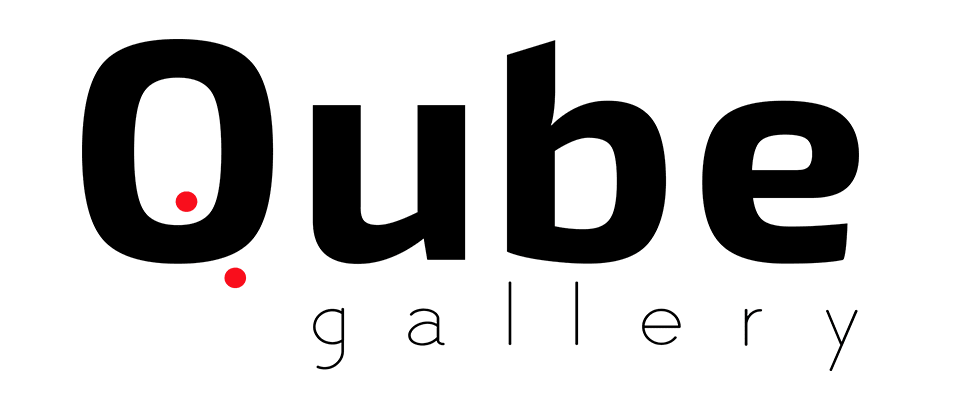Four Cebuano artists (Compra, Masa, Ong and Pongase) have collectively turned into their art during these times. While seemingly holding their breath until better days return, they have named their exhibition, aptly, “Waiting to Exhale”.
The image from the title conjures an underwater submersion, a huge gasp of breath meant to last until able to resurface. At the same time, we, their audience, are continuously emerging from underwater, or to use another metaphor, of hibernation, that was portably the world’s longest single stretch quarantine period. We surface after six months looking for signs of life, looking for the familiar amidst the new.... These four artists bring us that.
Following are the stories from the artists in their own words:
RONYEL COMPRA’S MAKAHIYA SERIES from the artist’s own words:
“This series of work is made from multiple tinted canvas layered over with broken, repetitive lines. These lines are made by directly scratching the surface using a knife’s tip, allowing me to bare its white under layer of paint. Dubbed the "makahiya series,” the project is pre-plotted with an actual plant as its counterpart element. The art is patterned after the Mimosa Pundica, also known as "touch me not" or "makahiya" in Filipino. The plant's obvious characteristics is its susceptibility to physical contact. It instantly reacts against touch, wind and other external movements. According to a study, the Mimosa plant demonstrates that plants can learn and have memory. This builds up on my library of work centered on memories and stories that represent symbolism, materiality and experiences.
MARK ANTON MASA’S REBIRTH SERIES from the artist’s own words:
“Like Paris in spring, this is a feel good collection. This is a different take on the idea of “in search of positivity in the midst of chaos”. This is a much brighter collection than my “Orderly Chaos” pieces. From hopeless to hopeful, uncertain but forging ahead and moving forward is still very present in this new collection. I hate to call it the “new normal”, instead I’m embracing the “new future”. Happy tears from your eyes would somehow help make your world look so clear and bright. There is a sense of optimism. The joyful tears that roll down your cheeks may cleanse you from your pain in the past that made you so weak and vulnerable. As they say, tears of joy are like summer raindrops pierced by sunbeams. You cry it out, you learn to forgive, you release the pain and you learn to carry-on and move forward. There may still be struggles along the way, but a tear or two may hopefully clear the worries away. You let your tears water the seeds of your life’s future. Now it is time to see the future so clear. Full of new opportunities and less tears. Build your courage strong until it gives you the sense of REBIRTH.”
JOSEPH ONG’S LOST, HOPE and FOUND SERIES from the artist’s own words:
“Creativity can ramify and take root in avenues that allow growth, and one avenue that allows me to find rich soil of imagination is abstract art. I have worked for many years on the urgency of representational art of photography. To find affinity with non-represented abstract expressionism is not entirely foreign. Both expressions allow me to explore the concept of urgency: the immediacy of digital photographs and the inherent catharsis of liberated paint strokes. In both photography and painting, I found a personal and grand gesture of capturing the persistent present and insistent moment. And there is no grand gesture that is ever more urgent than the demand for hope. In five months of quarantine, hope was lost and hope was found. I would like to convey the staggering personal journey of hope that I, and many others, have endured: wavering, quivering, extinguishing. I am thankful for the bold blissful moments of resilience, perhaps the innate indomitability of the human spirit. Hope once relinquished is hope revived. This series of paintings are interconnected bouts of anxiety, with some paintings almost blanched in white, and a couple almost like generous empty negative spaces. One can hope that the expressive process that I have employed along with the calculated found objects, ashes and pigments could portray forms of the complex human emotional range. Like the famous quote from Rainer Maria Rilke, the Austrian poet and novelist, “Let everything happen to you. Beauty and terror. Just keep going. No feeling is final”. Let all the emotions come, but maintain the hope that none of them is neither final nor fatal. Transform the terror to art, and that is our brave, rebellious act.”
GI PONGASE’S BACK SCENES SERIES from the artist’s own words:
This series is a depiction of the lockdown we are currently experiencing because of the pandemic. The installation was created using gunpla runners enclosed in plexiglass. Gunpla derives from the phrase ‘Gundam plastic model’ which is a model kit depicting the vehicles and characters of the fictional Gundam multiverse by Bandai. The gunpla runner, on the other hand, is the frame that holds the model parts into place.
Building gundam model kit is one of my recreational activities even before the pandemic. During the community lockdown being away from my studio, it served as one of my diversions from the things happening outside. I collected gunpla runners and transformed it into art pieces that deviate a bit from my established art style.
Stacking the gunpla runners together inside a plexiglass enclosure created space, texture, and movement which, for me, Is representational of today’s situation. We locked ourselves inside our homes to stay safe. As time goes by we are subconsciously building up fear, frustrations and anxieties in our minds because of all the uncertainties we are dealing with. We are fighting our own thoughts to keep ourselves sane and our immediate protection from this pandemic is a transparent barrier that can never be eluded.


